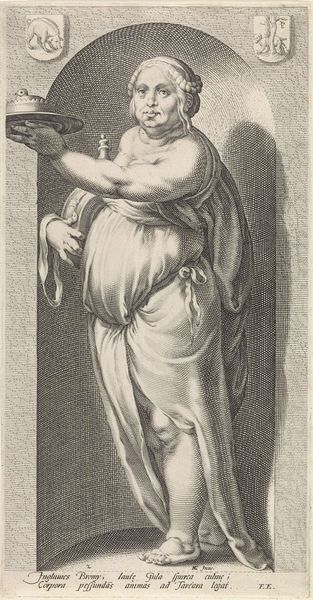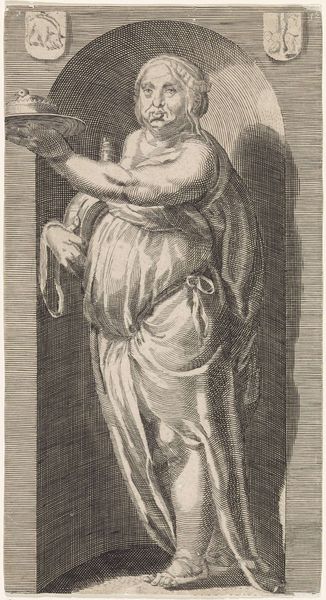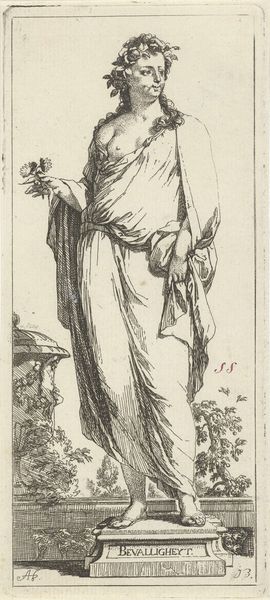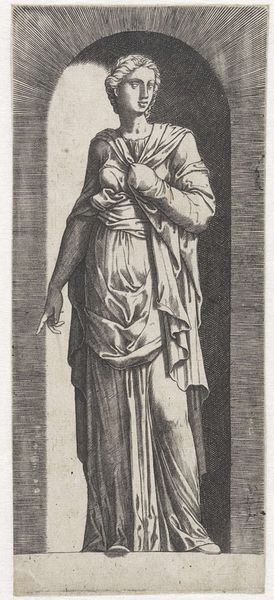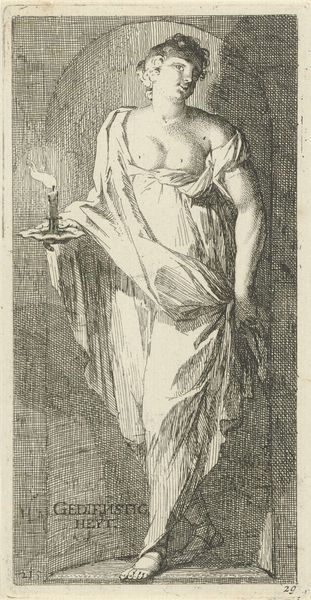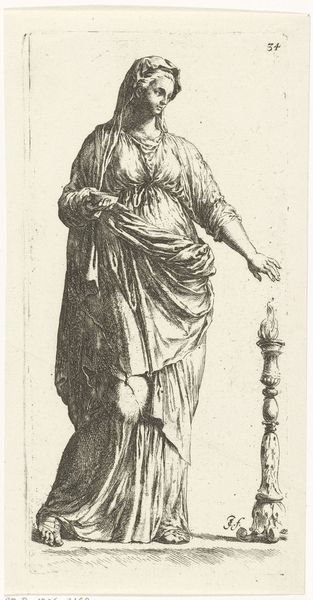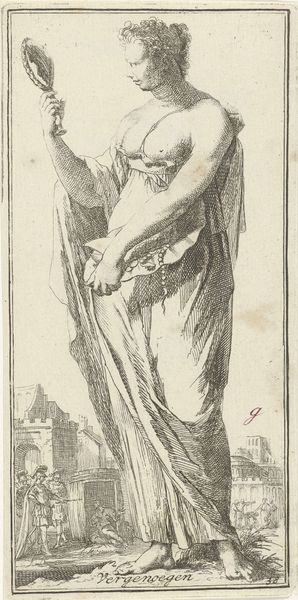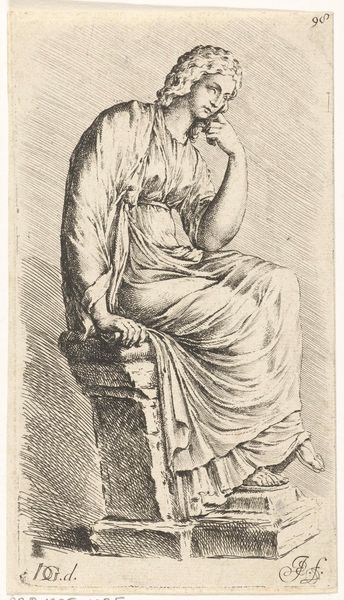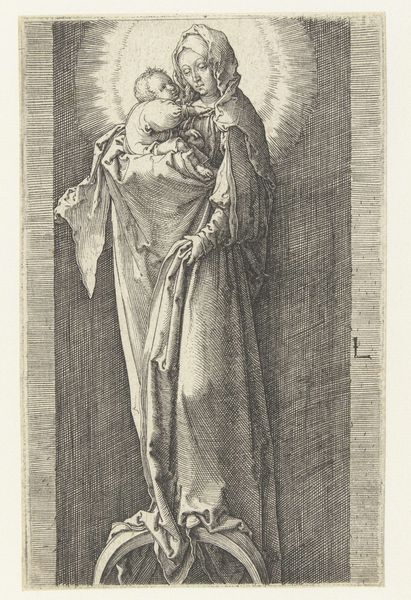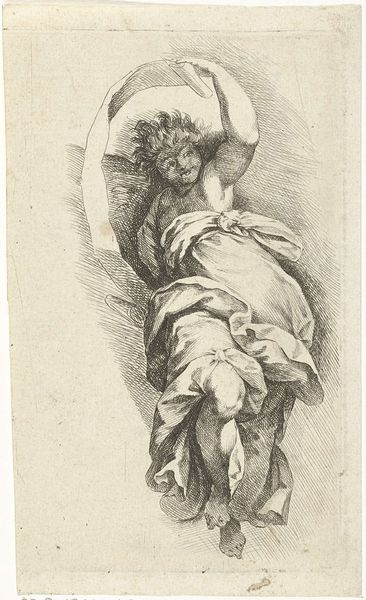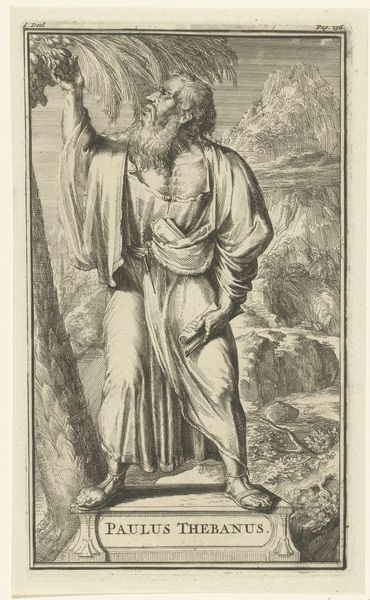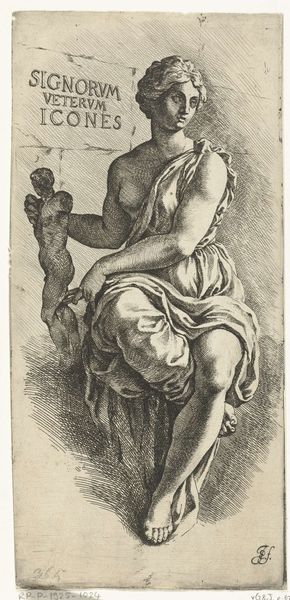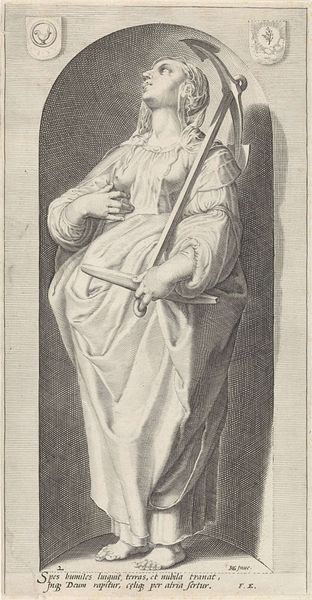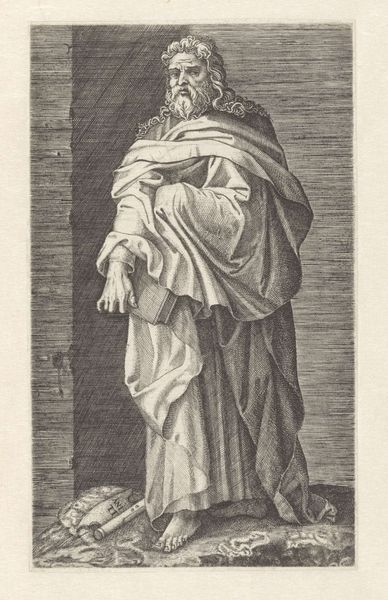
#
pen illustration
#
pen sketch
#
pencil sketch
#
old engraving style
#
junji ito style
#
personal sketchbook
#
ink drawing experimentation
#
pen-ink sketch
#
pen work
#
sketchbook drawing
Dimensions: height 181 mm, width 97 mm
Copyright: Rijks Museum: Open Domain
Curator: Before us, we have a work titled "Personificatie van de wijsheid," or "Personification of Wisdom" created in the 1710s. It resides here at the Rijksmuseum and is attributed to Arnold Houbraken. Editor: My first impression is one of quiet illumination. The etching, rendered in precise lines, holds a solemn, almost meditative quality. She emerges from the dark niche, carrying that softly glowing lantern, a beacon in the surrounding shadow. Curator: The figure certainly commands attention, doesn't she? Consider the deliberate rendering of Wisdom. She's depicted in classical garb, holding a book, all standard symbolic fare for the concept of wisdom in the 18th century. But she holds aloft not just a torch, as in many depictions, but a covered lantern. Why conceal the light? What statement might the artist be making about the acquisition of knowledge, and the era’s understanding of intellectualism as related to power and social status? Editor: The lantern is fascinating. Throughout art history, light often represents divine knowledge or revelation. However, the partial covering here changes the implication. Perhaps Houbraken is saying wisdom is a guide, illuminating not with overwhelming brilliance but gently and selectively, as required by individual journeyers. Curator: I appreciate you making that connection. Given the patriarchal structures prevalent at the time this artwork was conceived, it might suggest a constrained understanding of women’s wisdom, or perhaps that access to this enlightening ‘feminine’ wisdom requires more nuanced approaches. The surrounding artistic community may not have afforded the wisdom of the feminine the visibility it merited, perhaps implying this lantern represents suppressed knowledge. Editor: It certainly introduces a potent layer of reflection. Curator: Absolutely. It prompts reflection on the politics inherent in portraying knowledge, wisdom, and ultimately, power, during the Enlightenment, especially within gendered and patriarchal societal structures. Editor: Yes, stepping away, what initially struck me as simple illumination has truly broadened to a complex of layered symbolism, carefully etched into its time. Curator: And for me, examining this "Personification" through a socio-political lens exposes enduring dialogues about knowledge accessibility, questioning who can lay claim to Wisdom, and the purpose for which they wield its guiding light.
Comments
No comments
Be the first to comment and join the conversation on the ultimate creative platform.
